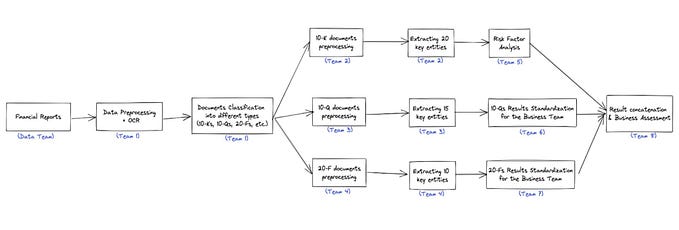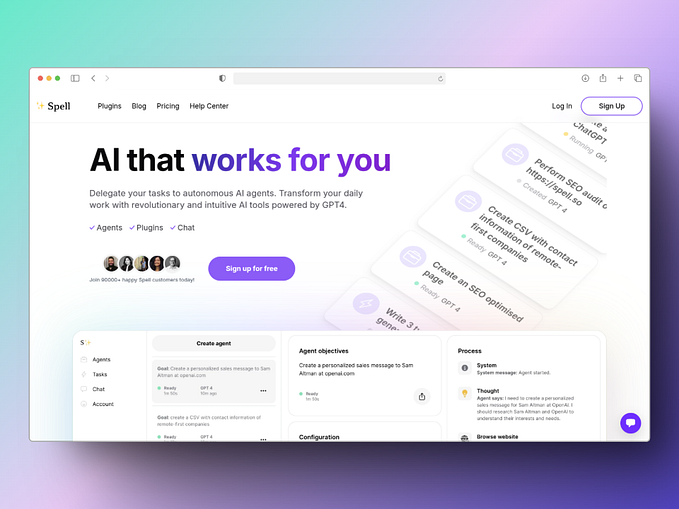Role of AI in transforming the Transportation Sector

Everyone will agree with the fact that technology has made our lives a lot easier. With the technology available today, we are a lot luckier than our previous generations to live a much more comfortable life. However, this is not the end. The advancement in technology never seems to slow down, and our future generations are even luckier to enjoy the optimal privilege of technology.
Artificial Intelligence (AI) is an advanced technology that powers machines with human intelligence. Thus, AI machines can mimic humans, automate manual tasks and comprehend things like humans.
So, AI has enabled the automation of many tasks with minimal or no human intervention. No wonder many industries, right from healthcare, manufacturing, logistics, and marketing, are already leveraging AI to their advantage. Yes, AI will take care of their repetitive, monotonous, and time-consuming tasks, allowing them to focus on other crucial tasks.
AI is such an innovative technology with immense potential that can transform any industry, that matters. The transportation industry is not exceptional, and businesses have already started making significant investments in AI and enjoy its advantage.
What will it be like to have AI in the transportation sector? How will AI transform transportation? Let’s discuss some practical use cases of AI in transportation.
Autonomous Cars:
A decade ago, most of us would have never believed the concept of autonomous or self-driving cars. But today, technology has made self-driving cars possible. Artificial Intelligence (AI) has already revolutionized many industries like healthcare, marketing, manufacturing, and whatnot.
The role of AI in the transportation sector is also groundbreaking. Yes, AI transportation employs a complex combination of sensors, cameras, and radars to drive the car without taking assistance from the passengers sitting inside.
If you still doubt the possibility of self-driving vehicles, you need to rethink. Many giants in the Automotive industry, including BMW, Audi, and Tesla, have been developing and testing autonomous cars.
But achieving a high level of AI in the extensive transportation market size can be tedious and very complex. Human brains have complex neural networks that enable humans to multitask while they drive. AI is already replicating such neural networks with similar patterns, empowering driverless cars in the future.
The advanced neural networks of AI identify traffic lights, people, curbs, street signs, traffic jams, and any obstacles. The intelligent AI system will make smart navigation possible.
Self-driving vehicles come with several benefits like reducing logistics costs, enhancing public transport in remote areas, safe delivery of goods, and more. For your information, autonomous taxis are already tested in Tokyo. The day is not very far from the rest of the world.
Traffic Management:
One universal problem that people face worldwide after global warming is traffic jams. In all major cities of the world, commuting to work or dropping kids to school can be tiring and time-consuming due to traffic jams. However, one can’t skip work or school, and the drivers often end up getting tired.
AI can rescue those drivers with its efficient traffic management system. AI enables automated traffic signals, high-resolution cameras, real-time processing, automated plate recognition systems, and more to manage traffic. Thus, AI technology will help decrease traffic congestion on roads by diverting traffic at peak hours using live feeds, sensors, and Google Maps. Hence, AI will decrease manual interference drastically while providing a better and more efficient way of traveling.
Moreover, AI can help reduce traffic jams proactively. The AI technology gathers data about traffic in real-time and sends the data to the cloud for further analysis and traffic predictions. Thus, the system will navigate the users the best possible route to their destination. Nevertheless, the AI system will improve road safety and reduce waiting times.
Digital Number Plates:
Digital Number plates will not only display your information but link your vehicle digitally to a wide range of services. The digital plates use GPS to track your location. You can even sync your bank account and pay for your tickets if any.
Above all, the digital number plates help you locate your vehicle in case of theft, crime, or other emergencies. In the US, digital plates are already on the way, and soon they will be replacing the standard number plates. Of course, the rest of the world will move on to digital number plates soon.
AI in Public Transportation:
Having efficient public transportation can bring solutions to many problems people face. More than just transportation, it can address various socio-economic issues of the countries. Yes, public transport is very much affordable for all people. Having advanced public transportation can make life easier for people from all walks of life.
When we implement AI on public transportation like buses, trains, trams, and subways, the commute gets smooth and seamless for travelers. The AI system will collect and analyze the data provided by cameras and sensors. Hence, it will identify a faster route avoid traffic and reach the destination faster.
Moreover, the entire travel process of public transport will become automatic with AI integration. Purchasing tickets, accommodating maximum passengers, number of stops, and peak hours will become more predefined and seamless. Thus, the AI will streamline public transport, ensuring convenient travel. Nevertheless, it will ensure reducing carbon emissions and controlling environmental pollution.
Aviation Industry:
Artificial intelligence can bring a revolutionary transformation in the aviation industry, especially in managing traffic operations. Plus, AI can open up new possibilities for airplane planning design and air-traffic management systems.
In fact, many research projects use AI in the aircraft industry already for predict traffic at various stages of flight. Moreover, with AI, we can analyze passengers’ behavior and look for ways to improve their travel experience. Applying AI technology in transportation will ensure a high degree of air-ground integration, allowing pilots to focus on other critical functions during the flight.
Train Automation:
The railway industry is one of the largest transportation systems in the country, connecting various cities across the nation. Implementing AI can improve the overall train management and operational processes. Some companies have already started working on driverless train prototypes for autonomous freight and passenger trains.
Artificial intelligence focuses on integrating sensors, cameras, and radars for automating trains. Thus, fully autonomous and driverless trains will be possible shortly. Above all, AI enhances the railway infrastructure to predict possible collapses prior. Yes, with operational intelligence, the AI system fetches the data from train sensors. One can leverage the data for accurate forecasting and maintenance purposes.
Nevertheless, AI can help the railway industry evaluate long-term performance and encourage constant improvement. Plus, AI is already in use for reducing logistics time.
Shipping, Navigation, and Ports:
Hands down, shipping is heavily used for logistics. Yes, many companies still rely on the vessel for delivering goods. Hence, waterway transportation often needs to analyze a large amount of data to optimize shipping routes for ships of varying sizes with various goods.
Artificial Intelligence in water transportation enables companies to gather specific data that they can leverage to make appropriate decisions. Most often, they can leverage the data for increasing the shipment safety and energy efficiency of vessels.
Marine logistics and navigation depend on various evolving factors. Thus, one needs to analyze a large amount of data as it could be challenging to optimize routes. More shipping firms have on-land control for the ship for these reasons. An automated vessel that is guided and controlled from the land encourages efficient ship navigation for quality marine delivery.
Air Taxi:
Comparatively, it is much easier to put an airplane or helicopter in autopilot mode than a car. Hence, intensive research is going on for running auto-pilot helicopters as taxis. Air taxis will help us overcome traffic jams, prevent accidents, and cut down carbon emissions.
In particular, drone taxis are ideal for avoiding traffic and commuting faster. Moreover, drone taxis also will prevent us from building expensive city infrastructure. The future of AI is extremely astounding, and it will enhance the city-building industry.
AI-driven helicopters will be entirely automatic and cover longer distances in a lesser time. Thus, passengers can reach their destination effortlessly.
Final Thoughts:
Artificial Intelligence(AI) can bring innovative solutions to the transportation sector as it did in many other industries. A few years ago, people would have laughed when they heard about self-driving cars. Now, AI has made automation possible not only in cars but in the shipping and aviation industry as well.
With an automated traffic management system, AI eliminates the need for traffic police. Thus, it safeguards traffic police from harming themselves by standing in a polluted atmosphere. Moreover, what is a better way to escape traffic jams, prevent road accidents, and commute faster? AI is the answer.
The benefits of AI in transportation are endless, and they will only increase in the future. Leverage AI now to enhance your transportation business operations and generate excellent ROIs.









